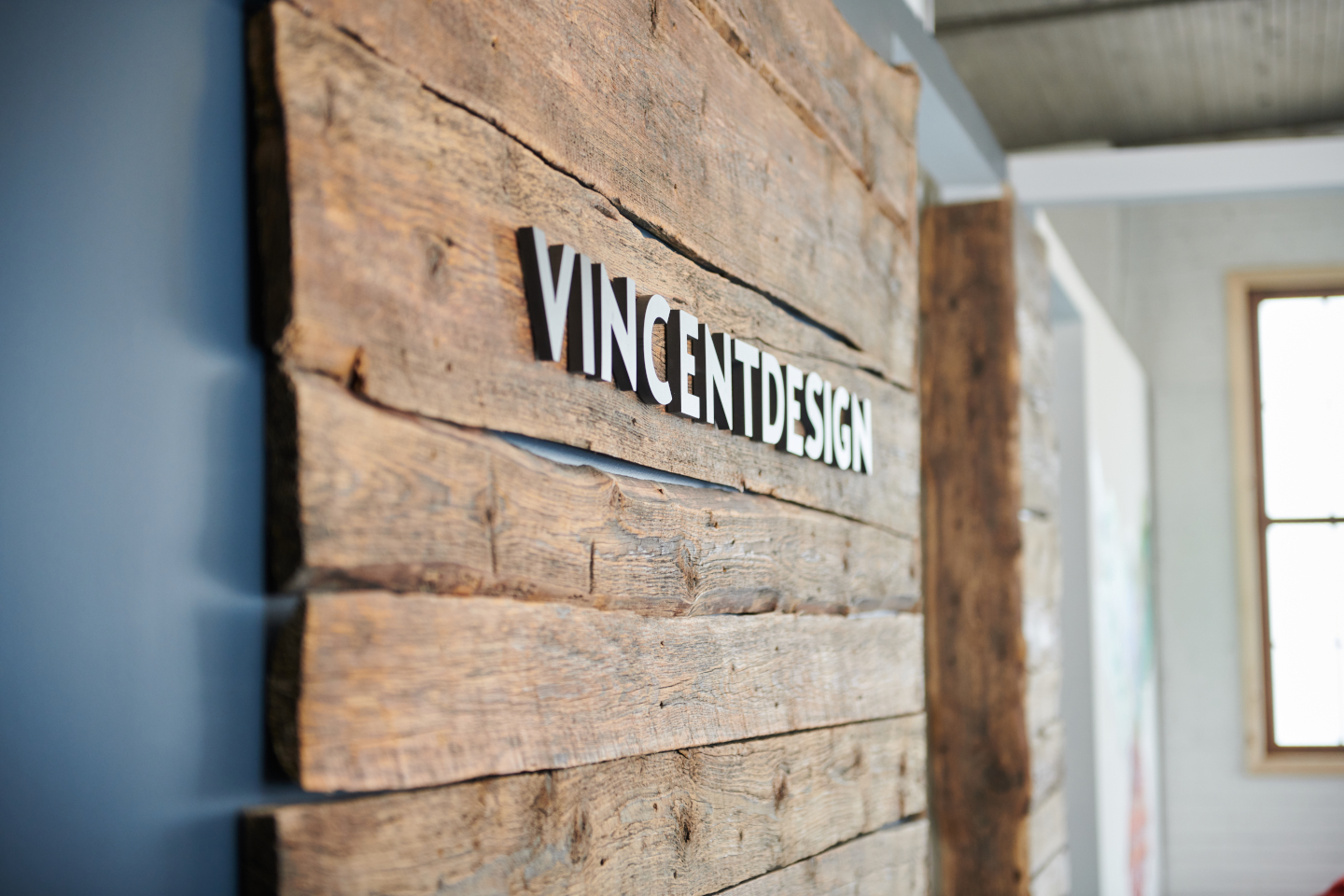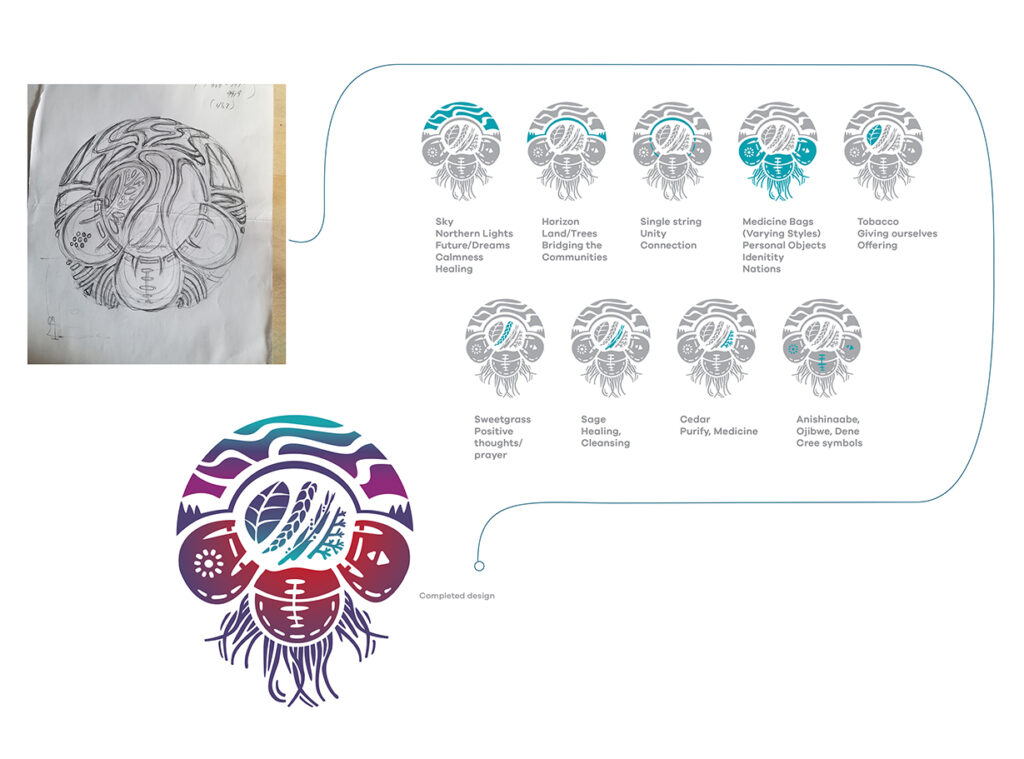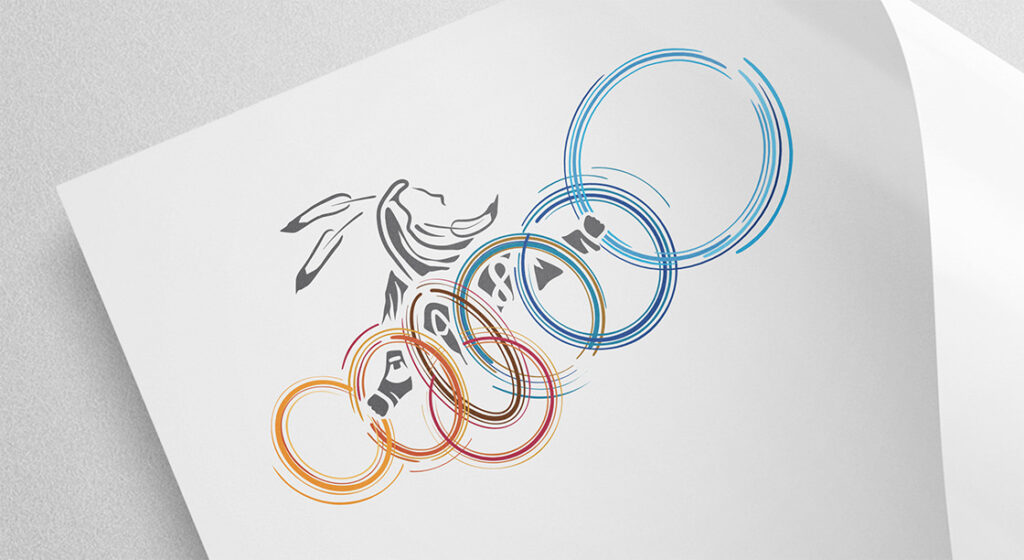Considerations And Best Practices In Indigenous Design

Protocol 8, International Indigenous Design Charter
“Consider the reception and implication of all designs so that they protect the environment, are sustainable, and remain respectful of Indigenous cultures over deep time: past, present and future.”
The field of professional graphic design is a creative arts industry with a long history, many diverse influences and a foundation of key skills, knowledge and practice.
For example, in design school, those of us called to this field spent a lot of time considering what constitutes “good design”, how to recognize it and how to create it. We trained in colour theory, typography, ratios and the Rule of Thirds. We drew lines for days (months!), developed our skills at page layout, and learned to create clean, versatile logos. In both web and graphic design, we also learned to apply User Experience (UX) Design, a professional standard for ensuring that artistry and visual appeal also meets the practical needs of clients and audiences.
Above all, professional designers learn through education, mentorship and experience to create designs that tell stories, reflect tone, convey emotions and encourage conversation. These are the foundations of the design industry as a whole, and thus they also inform and influence the evolving movement of Indigenous Design.
There are, however, extra layers to consider with Indigenous Design, whether the work is being created by an Indigenous designer or when the project and material is Indigenous – or both.
At Vincent Design, we like to approach these considerations as best practices and guiding principles. We share some of them here, along with examples from our own portfolio, to contribute to the growth and conversation about Indigenous design.
Authentic Representation
All memorable, iconic brands and designs are about storytelling – and Indigenous cultures bring a long storytelling tradition that can enrich and inform graphic designs.
These stories are spiritual, symbolic and sacred; they are not meant to be used or shared lightly. But they are not frozen in time either. In our work, we must blend the meaning of these stories into contemporary realities and modern platforms, avoiding tropes and stereotypes, while also honouring the wishes of each client and what they want depicted in their designs.
Being open to conversation and ideas, but also aware of the potential blind spots in design as they relate to representing Indigeneity, is essential to finding this balance.
Authentic, representative Indigenous designs also recognize that every group, culture and community is unique, represented by their own symbols and icons. Understanding that Indigenous cultures are diverse leads to designs that speak to diverse audiences. At the same time, we can draw from universal themes in the collective culture, from the stories that connect us all to the land, our ancestors and creation.
Founder and creative director Shaun Vincent expands on this principle with his own approach:
“My artistic style draws on my Métis roots and finds inspiration in nature – animals, plants, the environments around us that we all share. They are specific enough to evoke memories and connections to people’s own experiences, but they are generic and universal enough to be useful creative symbols: they leave the specific interpretation up to the viewer. This style gives my designs the capability of overlapping from nation to nation, region to region, which is useful to any project but often essential in Indigenous designs.”
For example, we chose soft colour palettes, simple lines and stylized Indigenous imagery in the design for local grassroots youth organization Ndinawe, a design that is universal in appeal while also uniquely reflective of their values, mission and trusted role in the community.
Similarly, featuring traditional medicine bags in various styles in the new logo for Keewatinohk Inniniw Minoayawin Inc. (KIM) is an authentic symbol of their role as a northern Indigenous health entity and also speaks to the diversity of nations they serve and represent.

“Representation can be quite challenging in professional Indigenous design,” adds Vincent. “Sometimes the topic or organization is best represented by a familiar, sacred symbol. Sometimes those symbols are important to the client or their audience, and they specifically ask for them to be included in the design. In these cases, we are also providing customer service and people-centred designs, and so an authentic process also has to be flexible, realistic and open-minded.”
Respecting Indigenous Cultures
When we’re designing logos with significant meaning for Indigenous businesses or organizations, it can be a challenge to touch on everything from the history, meaning, symbolism and subject matter while also considering design basics like legibility, cohesiveness, contemporary usage and attractiveness. It can be quite the balancing act.
Our best practice is to follow the protocols of the International Indigenous Design Charter, a thoughtful guide for anyone using, representing and sharing Indigenous knowledge and culture in professional design practice.
In particular, Protocol 8, “Impact of Design”, asks designers to ensure that “the representation of Indigenous cultures:
- reflects their cultural values and respects their customary laws;
- protects and respects the environment and honours the values of Indigenous cultures;
- are an authentic reflection of Indigenous knowledge; empowers Indigenous peoples: past, present and future; and,
- positively impacts Indigenous peoples who are both the subject and producers of the story: past, present and future.”
This can take many forms. It can mean including appropriate land declarations or acknowledgements of country in print and digital projects. It can involve ensuring any photos, and the subjects of any photos, taken or purchased to represent Indigeneity depict appropriate cultural values and honour the client and audience they address. It can mean supporting mentoring and hiring Indigenous designers from a diversity of nations and cultures to enrich and inform your firm’s approach.
For example, all of these considerations shaped our design of the logo for the Southeast Resource Development Council – logo treatment required special sensitivity with respect to using the symbolic aspect of tobacco in First Nation culture, ensuring its positive, traditional meaning was preserved and conveyed.
Consultation and Consent
When incorporating material from Indigenous teachings and sacred symbols, a collaborative approach can ensure that use of the more familiar sacred images and stories are tied to clients’ purpose, goals and brands.
Here too, the International Indigenous Design Charter provides a roadmap: Protocol 1 recommends that Indigenous design is Indigenous led, that we “ensure Indigenous stakeholders oversee creative development and the design process.”
As a best practice, we respect and uphold that Indigenous knowledge belongs to its cultural custodians: we always have informed consent from our clients, their communities or both to include any Indigenous element. We are Indigenous designers ourselves, and we therefore bring an awareness and sensitivity to each project we undertake and oversee.
Elders and Knowledge Keepers close to Vincent Design are also valued members of our team. We take grateful counsel in their advice, stories, conversation and feelings towards Indigenous issues, symbols and topics.
For example, in the case of our work on the Indigenous Peoples Atlas of Canada, consultation with First Nations, Inuit and Métis partners and stakeholder groups informed our selection of elements. We also undertook careful research with museum curators and historians on artifact archives to inform our designs and ensure we understood the cultural relevance of each item and symbol.

Trust and Accountability
To do this work, we sometimes also have to embrace what is difficult. We know that truth is a part of meaningful reconciliation. Some projects and subject matters require acknowledging pain and loss in our communities and cultures. We must always be sensitive, respectful and trustworthy to use, represent and work with this material.
At the same time, we have an equal responsibility to create designs that celebrate thriving, resilient and vibrant Indigenous cultures, realities and futures. Our designs will also always be rooted in the beauty, richness and joy of the First Nation, Inuit and Métis cultures we represent.
Learn More
Read more about how we approach web and graphic design as Indigenous designers: browse our portfolio, follow us on social media, or call or message us anytime – our team of graphic artists would love to work with you to create authentic and visually engaging materials that grow your brand and tell your story.
Related Reading
Indigenous Design and Why It’s Different
About our Process (aka, Listen, Research, Sketch, Repeat)
